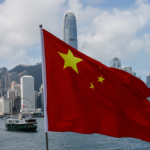
The escalating trade war between the U.S. and China has reached new heights. The U.S. government has now imposed a staggering 245% tariff on certain Chinese goods.
This drastic increase is a direct response to China’s actions following Donald Trump’s recent Liberation Day announcements.

The tariffs target key sectors like electronics, machinery, and textiles, with the aim of forcing China to reverse its retaliatory measures. The latest move marks a significant escalation in an already tense trade relationship.
What Led to the China Tariffs?
The U.S. and China have been in a heated trade war for years. Both sides have slapped tariffs on each other’s goods. However, the latest round of tariffs, set at 245%, is far more severe than before.
This move follows China’s retaliation against Trump’s controversial statements. The White House unveiled a fact sheet late Tuesday night outlining these tariff changes, signaling the U.S. government’s willingness to take a tough stance.
The new tariffs are a significant blow to China. Key industries like electronics, machinery, and textiles are expected to feel the most pressure. U.S. consumers and businesses, however, will also bear the brunt of this escalation.
Also Read: Australia Snubs China’s ‘Join Hands’ Plea Amid Rising US Tariffs
Impact on Consumers and Businesses
The imposition of a 245% tariff on Chinese goods means higher prices for many everyday items. Products like smartphones, laptops, clothing, and home appliances are likely to cost more. For consumers, this means reduced purchasing power, leading to tighter household budgets. The increased costs could also push businesses to raise prices, further straining consumer wallets.
Businesses that rely on Chinese imports are also at risk. With higher tariffs, many companies will face increased production costs. This could lead to layoffs or reduced investments in growth. Some industries may even look to relocate their supply chains to avoid these tariffs, which could cause disruptions.
Also Read: US-China Tech War Explodes: Why America Just Cut Off China’s Access to AI Chips
A Tough Road Ahead for Global Trade
The trade war is not just about the U.S. and China. Countries that trade with both nations are feeling the impact too. As tariffs increase, the global economy faces uncertainty. The World Trade Organization (WTO) has voiced concerns about the effects of this trade war on global trade volumes and economic growth.
China, for its part, has made it clear it won’t back down. The country has repeatedly stated that it will take necessary steps to protect its economic interests. Expect further retaliation from China, whether through additional tariffs or trade restrictions. This tit-for-tat escalation could lead to more uncertainty in the global market.
What’s Next?
As tensions between the U.S. and China continue to rise, the implications for both countries and the world are becoming clearer. The latest round of tariffs is likely to disrupt global trade, increase costs for consumers, and force businesses to adapt to new economic realities. The future of this trade war remains uncertain, but one thing is clear: the global economy is in for a bumpy ride.
Also Read: The US-China Trade War Just Hit Closer to Home: Indian Metals Take a Hit












